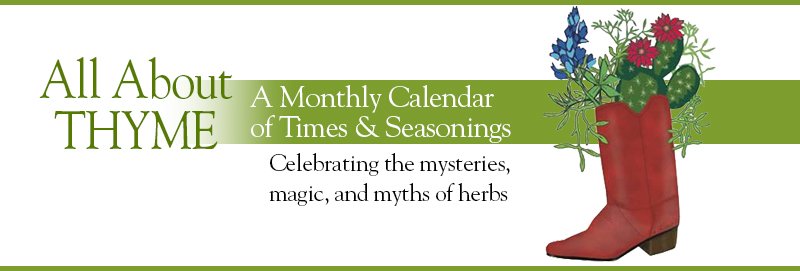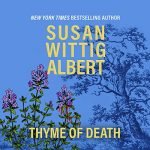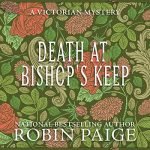Herb of the Year for 2019: Anise hyssop (Agastache ssp.
Flower of the Month for November: Chrysanthemum
November is National Sweet Potato Awareness Month
Week 1. National Fig Week
November 5: Election Day in your local area
November 10: St. Martinmas Eve, the traditional end of harvest, with the Winter Solstice only six weeks away
Week 2. World Kindness Week
November 11: Veterans’ Day in the U.S., Remembrance Day in Canada.
November 13: Indian Pudding Day
November 15: National Clean Out Your Refrigerator Day
Week 3. National Farm-City Week
November 21: Great American Smokeout
November 23: National Eat a Cranberry Day. (Who can stop with just one?)
November 24: In England, it’s Stir Up Sunday.
Week 4. National Family Week
November 26: National Cake Day
November 28: Yes, it is—Thanksgiving!
November 30: John Mason of New York City, patented the Mason jar on November 30 1858, and changed homemakers’ food preservation habits forever.

The practice of smoking tobacco began in the Americas. Visiting Cuba with Columbus in 1492-93, Rodrigo de Jerez adopted the natives’ smoking habit and took it home with him. Back in Spain, however, his neighbors were so terrified by the smoke coming out of his mouth and nose that the local Inquisitor decided he was up to some deviltry and sentenced him to seven years in jail. (Steep price to pay for a nicotine high.)
Tobacco was a feel-good herb, but it was known to have its sinister side, too. In the early 1600s, Frances Bacon wrote that more people than ever were smoking, and that it was next to impossible to quit. But it wasn’t until some 500 years after Columbus accepted the first tobacco leaf that smoking’s significant health risks were recognized. In 1906, the new Food and Drug Administration put nicotine on its list of drugs, although it was removed after the powerful tobacco industry objected. The first tobacco lawsuit, filed by a man who lost his larynx to cancer, was won in 1962; the first second-hand smoke suit was won in 1976. In 1995, the FDA finally managed to declare nicotine a dangerous drug.
It shouldn’t be any surprise that nicotine has been used as a murder weapon. The first documented case occurred in Belgium in 1850, where the Comte and Countess de Bocarmé found themselves in need of some quick cash and targeted the countess’s younger brother, Gustave Fougnies, who was about to inherit the family fortune. The count suddenly acquired an interest in chemistry and a couple of bales of tobacco leaves. The countess, who never appeared in the kitchen, prepared the dinner herself and invited her brother. After the feast, Fougnies dropped dead. The count and countess announced that he’d had a stroke. The servants, however, were suspicious (wouldn’t you be?) and blew the whistle.
Given the count’s sizable tobacco stash and the countess’s sudden culinary passion, the gendarmerie suspected death-by-nicotine. But there was no test to prove that this deadly plant alkaloid was the murder weapon. That’s when Jean Servais Stas, Belgium’s premier chemist, stepped up, creating the first test to detect plant poison in human tissue. The Stas-Otto method he pioneered is still used by modern toxicologists.
The count and countess were charged with murder. The countess was acquitted when she claimed that her husband forced her to kill her brother. The count was executed on July 19, 1851.
More reading
–A recent case of nicotine as a murder weapon: Husband who poisoned his wife with nicotine gets life in prison
–An Unthymely Death and Other Garden Mysteries, by Susan Wittig Albert (the story: “An Unthymely Death”).
It’s here! If you’ve been waiting for the paperback editions of Susan’s latest Darling Dahlias mystery and her 3-novella series of Ruby stories (NoBODY, SomeBODY Else, and Out of BODY) your wait is over! The Darling Dahlias and the Poinsettia Puzzle and The Crystal Cave Trilogy are now available–in print–at Amazon. Audio books available, too!
We know you love sweet potatoes, a traditional accompaniment to the holiday turkey. But you don’t have to smother this versatile vegetable in lots of add-on calories to make it taste good. If you’re cooking light, you might want to give these delicious oven-fried sweet potatoes a try. Or how about some luscious sweet potato rolls? Sweet potatoes are loaded with beta-carotene and are a good source of protein, calcium, and vitamins E and A—as well as fiber, of course. They’re an ally in the battle against such chronic health issues as heart disease, cancer, rheumatoid arthritis and asthma.
November 11–the eleventh month, eleventh day, eleventh hour–marked the end of World War I, and is now the day we honor our servicemen and women. For a first-person account of the end of that terrible war, check out this Eyewitness to History site. For a gallery of historic Veterans Day posters, go here. And here’s a moving documentary about that awful war, remembered with grace and courage by the men who fought it: They Shall Not Grow Old.
November 13 is Indian Pudding Day. Here’s what you need to know about that, plus an Indian pudding recipe for your slow-cooker.
Stir-up Sunday? Find out about this traditional British celebration.
National Eat a Cranberry Day. Native Americans applied crushed cranberries to wounds and used them to treat scurvy, a disease caused by a lack of vitamin C. To prevent scurvy, eighteenth-century American whalers and mariners carried a large supply of cranberries on their voyages. More recently, these tart red berries have been shown to prevent urinary tract infections, reduce the risk of kidney stones, and help fight gingivitis. For a peck of great-tasting cranberry recipes, visit the Cape Cod Cranberry Growers page. Our favorite: Cranberry Pecan Streusel Coffee Cake.
For a behind-the-scenes look at Thanksgiving, read this fascinating post by journalist Aimee Levitt: How culinary propaganda from a women’s magazine made Thanksgiving a thing
Find out what Susan is up to these days by visiting her blog, Lifescapes. There’s always something interesting going on in the Texas Hill Country. She posts book reviews, bookish thoughts, and notes on the fast-changing world of books on her “other” blog, BookScapes.





